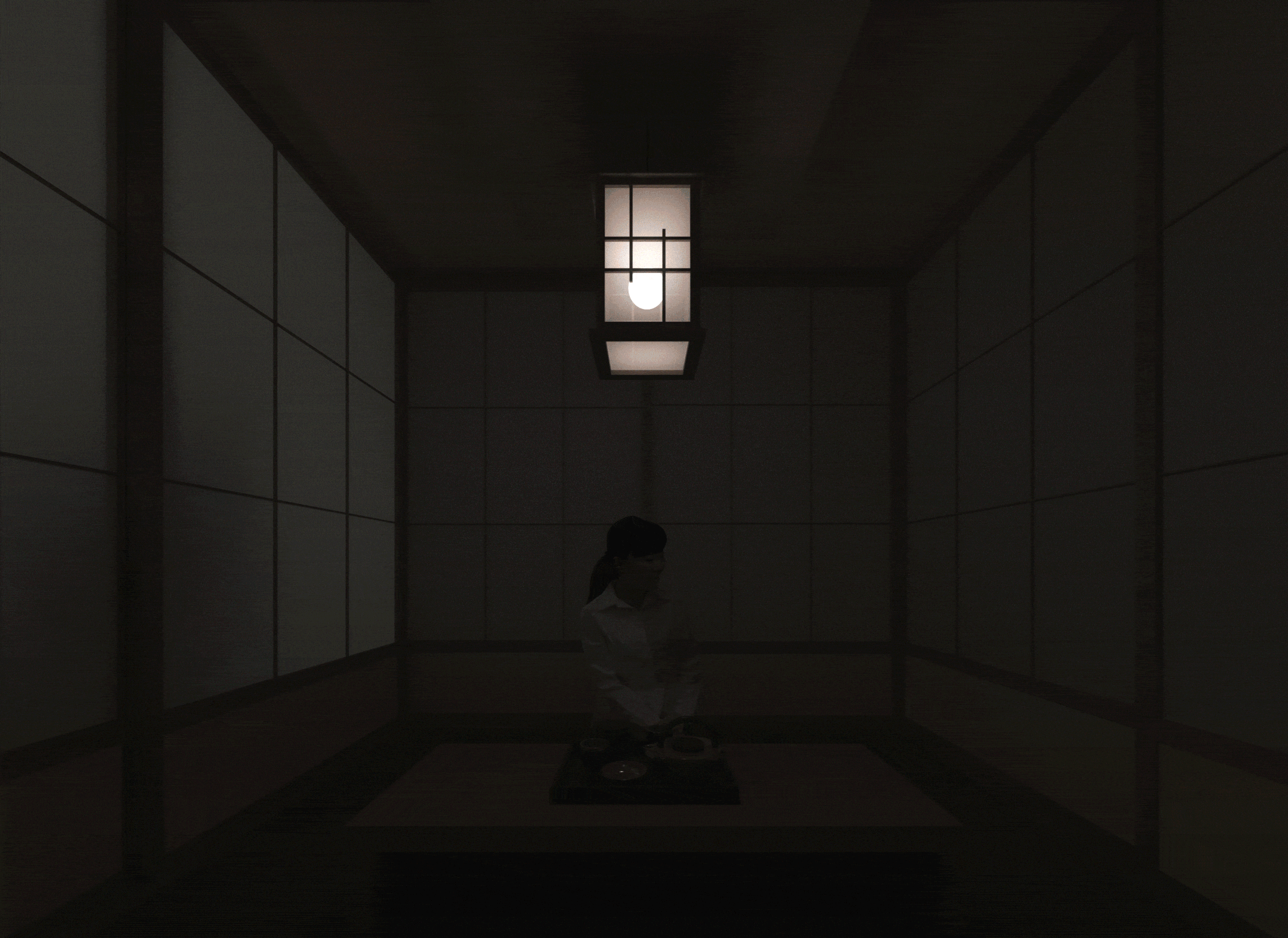
As fragments lay dying
At transient traces, one gazes.
Typology
Art Installation, Exhibition Design
Year
2018
The Japanese teahouse is an architectural space designed to complement the Japanese tea ceremony—a very deliberate and elaborate event that exemplifies Japanese aesthetics. Often, the teahouse itself reflects a certain, if not various aspects of Japanese philosophy; an example would be the Soan Teahouse, which features a slightly elevated and shrunken entrance, necessitating a bowing gesture upon entering the space.
While this particular art piece does not borrow much elements specifically from the Soan teahouse, it employs similar techniques to convey modern sentiments while simultaneously leveraging an authentic architectural representation of the teahouse in connotation to tradition. The piece addresses the rise of a new social culture where social media, and the devices that enable access to it, eclipses over the physical, tangible world. The whole installation encloses viewers within a relatively dark space, with images projected from projectors as the main source of illumination. The outer area allows viewers to tread freely in and out, while the teahouse in the middle hosts booked sessions where participants partake in a tea-drinking experience.
Within the teahouse, viewers are met with two videos; the first one is themed with the seven elements that incidentally comprises the seven days in a week in the Japanese language, the second one, a more grounded and realistic document of the modern-day phenomenon of extensive smartphone usage. Combined, they narrate the erosion of the fundaments in human creativity and spiritual well-being as indulgence in mindless entertainments become more and more prevalent. Whether one sits in the teahouse, or walks outside, as they look at the fleeting images dancing on the byobu, or inhale the odours of tea and wood, they are prompted to slow down and contemplate the themes suggested by the piece.








